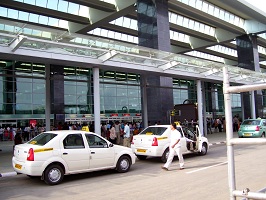Bangalore International Airport is preparing to introduce biometric screening at entry for holders of India’s digital identity numbers, the first step in adding a layer of security and efficiency at one of the country’s busiest airports. Bengaluru airport is currently testing the feasibility of the concept with technology vendors Morpho of France and Vision Box of Portugal. Hyderabad airport implemented biometric screening last year and, according to some biometric industry reports, the Mumbai and Delhi airports, too, are set to introduce e-boarding.
“The process of manual verification of identity is a security concern and a pain point for the consumer. We want to digitize and automate the process to make the entire experience memorable and hassle-free,” said Hari Marar, President, Airport Operations, BIAL, the operator of Bengaluru’s Kempegowda International Airport. “The process should be as simple as waving my hand to get entry into the airport.”
Given the heightened global threat to high-profile places such as airports, biometric screening is expected to provide benefits beyond mere passenger convenience and reduction in security personnel. A few foreign airports, including some in the United States, have begun implementing biometric screening of passengers.
More than 1 billion people in India have been issued Aadhaar cards, for which facial, iris and fingerprint data are recorded into a national digital registry. The biometric data and digital identification numbers have been put to a number of uses, including for identity verification in issuing passports and direct transfer of cash subsidies under various welfare schemes. But for Bengaluru airport’s initiative to have any security impact, several legal and procedural challenges have to be overcome, said Dubey.
For one, Aadhaar cards are not mandatory and hundreds of thousands of passengers—both Indian citizens and foreigners—are unlikely to be registered with it. Also, Bengaluru airport’s biometric scanning system would have to be linked both to the Aadhaar database as well as to the National Crime Records Bureau’s database to flag any person on the no-fly list.








